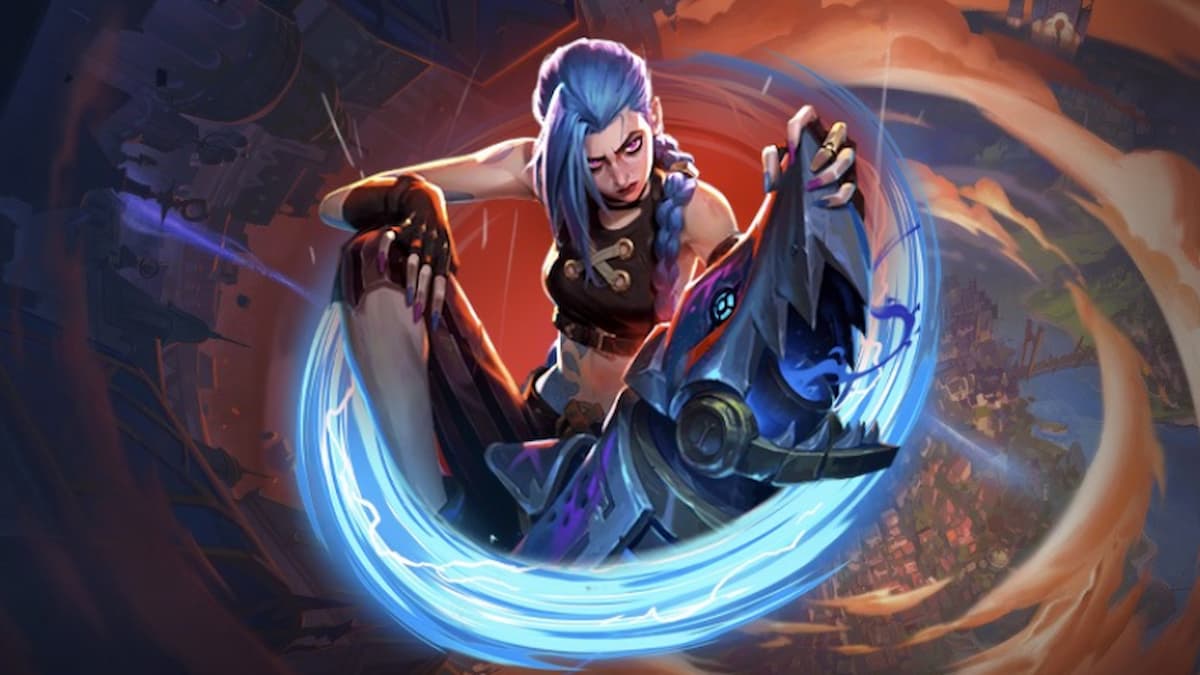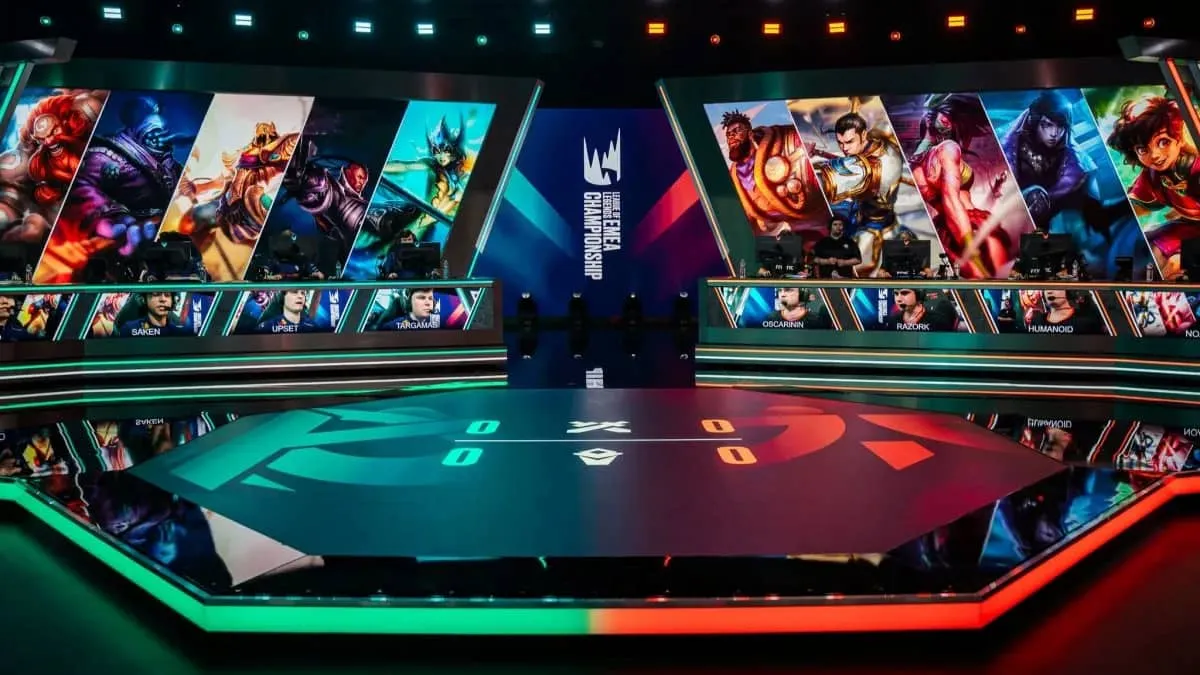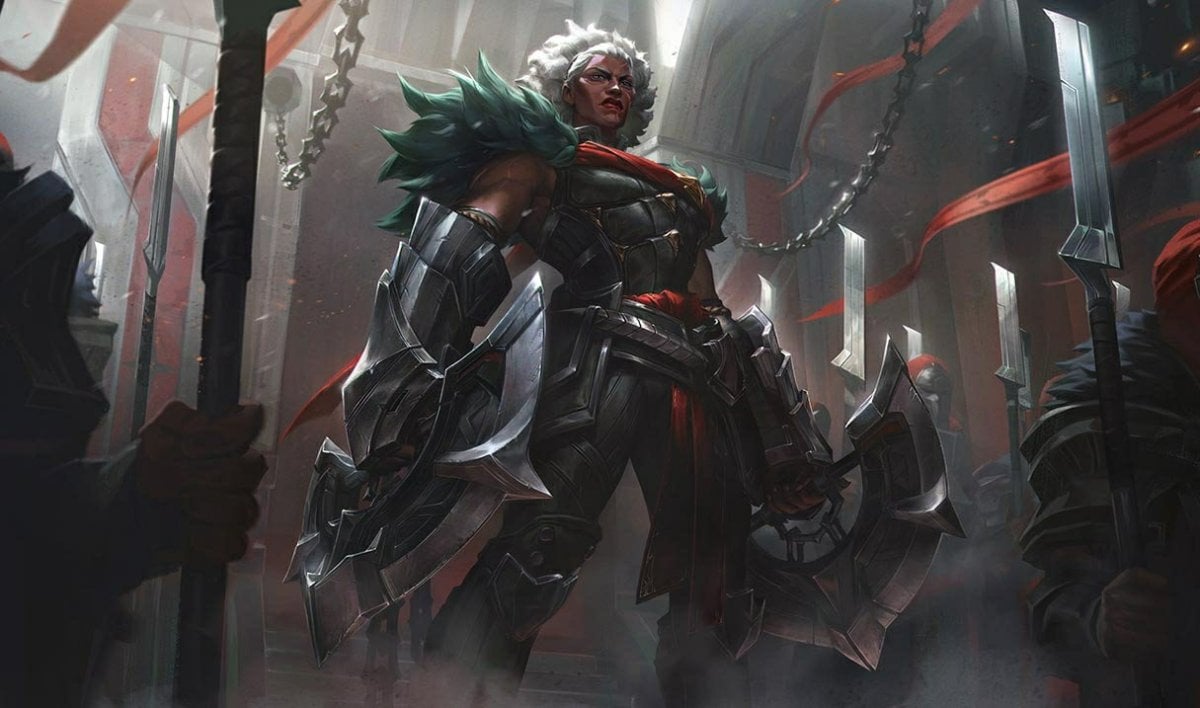Competitive pick/ban stats, along with solo queue pick/ban rates, are often used as the barometer for overall champion balance and diversity. To that end, Riot’s 2015 patch notes have lauded increasing champion diversity with their changes. But looking at those competitive stats—has Riot really succeeded?
Let’s analyze competitive pick/ban statistics from across all major regions since the inception of the LCS in 2013, for a total of 4532* competitive games. First, let’s break out pick/ban percentages into tiers. Starting at the top, a champion that appears in more than half of all competitive games is in the top tier of champions. Below that, we’ll add tiers for champions with less representation. The first column for each season shows the number of champions in each tier, while the second is the percentage of the overall champion pool for that season for that tier. This second statistic mitigates the difference in the number of champions for each season.
* full list of analyzed tournaments provided below 
As we can see, not much has changed across the top two tiers for each season. Every year, there are 6-7 champions (about 5% of the champion pool) overrepresented in competitive play. And below them are 17-20 champions (about 15% of the champion pool) that are seen 25-50% of the time—competitive mainstays. It’s in the lower tiers where we see greater variation. In Season 3, 35% of the champions were niche or temporary picks due to nerf/buff/meta change. That number plummeted in the 2014 and 2015 Seasons to below 25%. Furthermore, champions that were picked less than 2.5% of the time—let’s call these non-competitive champions—went from 32% in Season 3 to over 40% in the following two years. By the way, the ignoble “never picked/banned” champions for 2015 are Akali, Heimerdinger, Nasus, Rammus, Teemo, Tryndamere, and Warwick.

Looking at the overall percentages and pick/ban curves, it’s clear that when it comes to competitive play, Riot has been unsuccessful in promoting broader overall competitive champion diversity. The actual champions strong in a given season change, but there’s always about the same number in the top tiers. However, the number of niche picks has dropped appreciably over the past two years, while the number of non-competitive champions jumped from 39 in 2013 to 53 in 2015. Recent reworks might change that some by the time 2015’s World Championship ends—Darius, Garen, Fiora, Mordekaiser and Skarner all were non-competitive and were recently reworked.
So why have the number of niche picks gone down while the number of dominant and mainstay competitive picks has stayed roughly the same? Is Riot bad at balancing? Do they not nerf the dominating champions? Should we nerf Irelia again to be safe? Those are much harder questions.
The first factor is the champions who dominate each season (S-tier). With two very glaring exceptions, champions do not dominate for more than one season. That implies Riot addresses the dominant champions…eventually. Or the champion is disabled for half a split due to a bug. Right, Shen? Here are the competitively-dominant champions from the past three seasons:

Only Elise and Thresh occur more than once. Elise dominated Season 3 and the 2014 Season as the preeminent queen of the jungle. She disappeared from competitive play at the start of 2015, but with recent buffs, has returned, hovering around a fairly healthy 15% pick/ban rate over the summer splits worldwide, with an expected increase in play during worlds. Thresh, on the other hand, seems immune to nerfs. While Alistar, Braum, and Janna all have given him competition at the support position recently, Thresh remains a dominant competitive pick after three years.
In the next tier down (the mainstays/A-tier, between 25 and 50% pick/ban), there is a fair amount of fluctuation. Only Ryze has been a mainstay across three seasons, while only ten other champions have been mainstays for two seasons out of a total pool of 45 champions. Looking at summer 2015, the A-tier champions have largely decreased in their pick/ban percentage compared to the season average (glaring exceptions: Alistar, Ryze, Viktor). It stands to reason that Riot is fairly reactive when it comes to nerfing over-represented champions in the grand scheme—though that’s little comfort for those playing against release Kalista in solo queue.

Now to the second question: why has the number of competitive niche picks dwindled over the last two years? There are a few possible reasons. The first is that as Riot updates their champions, the gap between the haves-and-have-nots (the Viktors of the League versus the Brands) has gotten bigger. The champions who haven’t been updated/reworked and weren’t competitive to begin with have fallen so far behind that they’re useless even as a pocket pick. One problem with this theory is that Riot has made significant changes and updates to several such champions across 2014-2015 (e.g. Teemo, Soraka), and their competitive pick-ban stats have remained dismal.
The second possible explanation is that the competitive scene matured. In 2013, there were more regional metas and champions as opposed to a more global awareness of champions and tactics. In 2015, it would be unthinkable for say, Ahri, to emerge in Korea as dominant and not have all the other regions pick up on it. Yet in Summer 2013, Ahri was at 53% pick/ban in Korea and 49% in Europe, but only 38% in NA, 38% in China, and merely 9% in Southeast Asia. Surprise, surprise, Ahri was picked or banned in 83% of all Worlds games, the most picked midlaner in that tournament. Or take Aatrox. Europe was the only region to play Aatrox in any significant amount in Summer 2013. At worlds that year, Aatrox had a 56% pick/ban rate largely thanks to Europeans bringing him into the spotlight.
In the past couple of years, there’s been more global awareness in picks and bans. There are fewer regional outliers—which is where most niche picks came from. We don’t see things like Singed having a 25% pick/ban rate in NA while the other regions have him at less than 10% nearly as often. This particular example, by the way, happened in spring 2013. There are still a few regional favorites (Jax in Europe this year for example), but not as many.
The third reason could be an increase in the number of Chinese games. The Chinese LPL doubled in games in 2015 compared to previous seasons, and that’s without including tournaments like Demacia Cup. This led to a more Chinese bias in the data set. Chinese games account for 35% of the data set in 2015, while in 2014 and 2013, they were 16%.
One more thing
Win rate tends to be a fuzzier statistic since it’s not meaningful on its own. If one competitive game with Shaco was played all year and he was never banned, and the Shaco team won, Shaco would have a 100% win rate despite being in the bottom tier of pick-ban statistics. It’s not meaningful. When a champion has a high pick-ban rate, the larger sample size and greater variation in the skill level/success of the teams picking them helps normalize out some of the crazy variance of small sample sizes. So looking at 2015 win rates only for champions with greater than 10% pick rate, some interesting results appear:
- Kalista has a win rate of 56.9%, which is an outlier in competitive play. Even hugely popular champions like Azir don’t have win rates above 53%. The only other champion who beats her win rate while being picked in more than 10% of the games is Lucian, who has an amazing 66% win rate.
- Lucian, while popular in the Chinese and Korean summer splits, has fallen off lately. He wasn’t seen that often in any of the regional finals despite his very high win rate.
- Fizz, Nidalee, and Morgana all have season-long winrates of above 54%. Out of those Morgana’s popularity waned heavily into the summer while the other two have been picked fairly often.
So now what?
As stated above, competitive pick/ban statistics are only one barometer of game balance and champion diversity. Solo queue pick/ban rates, and win-rates when combined with high pick-ban rate, as well as win rates for experienced players of the champion are also useful balance indicators. Riot’s targets for competitive pick-ban diversity are also generally unknown. However, as pre-season approaches, hopefully this information will serve useful as a guide for people to understand which champions need some help and which champions are just too strong.
In general, gaming communities excel at identifying problems and fail at suggesting fixes, so rather than write 17 pages on needed changes and the importance of sandbox mode; here are just a few possible issues, based solely on high-level competitive pick/ban and win-rate statistics. This is the not the only means for determining balance issues; as stated, high-elo solo queue statistics are another, and looking at season-long statistics has to be done with a grain of salt and a heavy bias towards the most recent results. We already know Riot is planning on Yorick, Poppy, and Taric reworks, along with some marksman changes to at least Quinn, Caitlyn, and Miss Fortune, so those won’t be mentioned.
- Alistar and Kalista are too strong and might be must-pick/ban at Worlds if 5.16 and 5.17 didn’t tone them down enough. Kalista is the most egregious example of a dominating competitive pick in the data set, more than 2014 Lucian, and 2013 Shen.
- Squishy supports not named Janna are underrepresented. Karma, Nami, Sona, Soraka, Zyra etc. basically don’t exist in competitive play right now. On the topic of supports, Thresh doesn’t need any help either—and is probably too strong at 58% pick/ban and S-tier in every season thus far.
- Light fighters/certain AD casters (Aatrox, Master Yi, Shaco, Kha’Zix, Pantheon, Wukong, Tryndamere and Nocturne) are also underrepresented in competitive play. On the other hand, this is the same class of champion that solo queue loves to hate.
- Mages are either feast or famine in terms of competitive use. Azir, Lulu, and Viktor basically dominate the midlane right now and Ryze is very popular as well. Vladimir, Orianna, Cassiopeia and Ahri see varying levels of play. Ziggs isn’t played right now but used to dominate. Anivia, Brand, Galio, Heimerdinger, Karthus, Lissandra, Lux, Malzahar, Swain, Syndra, Veigar, Vel’Koz, Xerath, Zilean, and Zyra are competitive non-entities and largely have been since the institution of the LCS (Some have had brief bursts of popularity, see Lissandra 2015 Spring). They all need something to differentiate them from the other mages so they don’t just go through cycles of flavor of the month when over-buffed. Maybe ask Ghostcrawler for his advice?
- The juggernauts who weren’t recently reworked are highly underrepresented in Season 5, particularly the summer split. Talking about Singed, Nasus, Warwick, Volibear, Dr. Mundo and Trundle here.
- Akali, Talon, and Katarina are rarely/never seen in the competitive scene but have high potential to go nuts in solo queue. Something something separate good assassins from the great assassins while maintaining competitive integrity. Note that these three don’t have a reliable way to get out once they go in, compared to Ekko, Fizz, Kha’Zix and Zed, who are more popular.
A bit of bonus:
Since I had the data set, I made pick-ban statistics for each champion across all regions for each split of the competitive season. However, because trying to draw too many conclusions from data sets that were four to six months long is pretty sketchy, I’m just going to offer them up to you and let you draw your own conclusions! A more granular set (monthly, probably) of data would be more useful for analysis, but I don’t have that.

Data Set
2013: NA Spring Split, NA Spring Playoffs, NA Summer Split, NA Playoffs, EU Spring Split, EU Spring Playoffs, EU Summer Split, EU Summer Playoffs, LPL Spring: 112 games, LPL Spring Playoffs, LPL Summer, LPL Regional Finals, International WildCard, OGN Winter, OGN Spring, HOT6iX Summer, Korean Regional Finals, Garena Spring, Garena Summer, SEA Regional Finals, Taiwan Regional Finals, Worlds.
2014: NA Spring Split, NA Spring Playoffs, NA Summer Split, NA Playoffs, EU Spring Split, EU Spring Playoffs, EU Summer Split, EU Playoffs, LPL Spring, LPL Spring Playoffs, LPL Summer, LPL Regional Finals, International WildCard, OGN Winter, OGN Spring, HOT6iX Summer, Korean Regional Finals, Garena Winter, Garena Spring, Garena Summer, Garena Regional Finals, All-Stars, Worlds.
2015: NA Spring Split, NA Spring Playoffs, NA Summer Split, NA Summer Playoffs, NA Regional Finals, EU Spring Split, EU Spring Playoffs, EU Summer Split, EU Summer Playoffs, EU Regional Finals, LPL Spring, LPL Spring Playoffs, LPL Summer, LPL Summer Playoffs, LPL Regional Finals, IWCT Turkey, IWCT Chile, LCK Spring, LCK Spring Playoffs, LCK Summer, LCK Summer Playoffs, LCK Regional Finals, LMS Spring, LMS Spring Playoffs, LMS Summer, LMS Summer Playoffs, LMS Regional Finals, Mid-Season Invitational.
Does not include Challenger Series, 3rd party tournaments like Demacia Cup, IEM, relegation tournaments, or promotion tournaments. Data obtained from lol.esportspedia.com, lol.gamepedia.com, and gamesoflegends.com. Special thanks to SillySeal for the heatmap and editing.






Published: Sep 29, 2015 08:24 pm